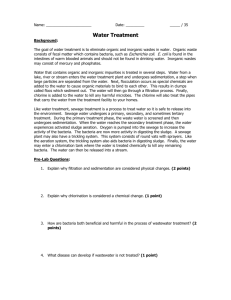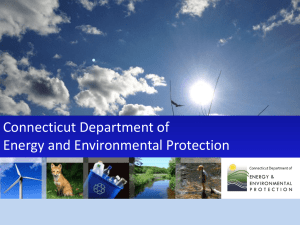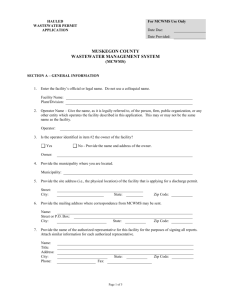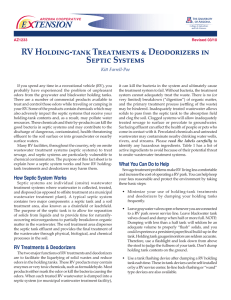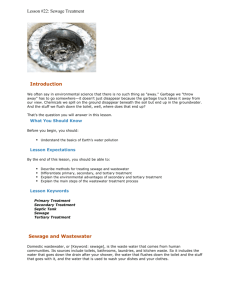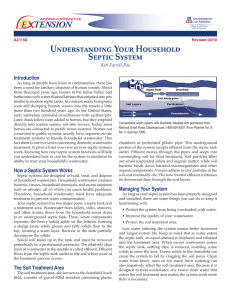Septic and Sewer Systems Question Sheet Answers
advertisement
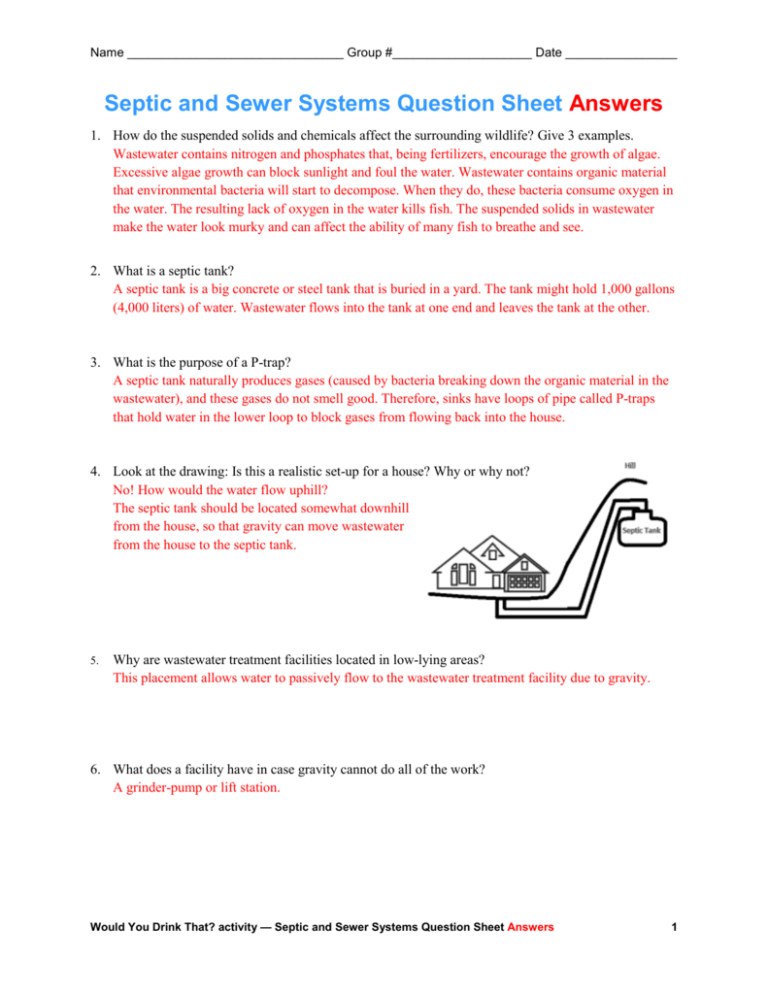
Name _______________________________ Group #____________________ Date ________________ Septic and Sewer Systems Question Sheet Answers 1. How do the suspended solids and chemicals affect the surrounding wildlife? Give 3 examples. Wastewater contains nitrogen and phosphates that, being fertilizers, encourage the growth of algae. Excessive algae growth can block sunlight and foul the water. Wastewater contains organic material that environmental bacteria will start to decompose. When they do, these bacteria consume oxygen in the water. The resulting lack of oxygen in the water kills fish. The suspended solids in wastewater make the water look murky and can affect the ability of many fish to breathe and see. 2. What is a septic tank? A septic tank is a big concrete or steel tank that is buried in a yard. The tank might hold 1,000 gallons (4,000 liters) of water. Wastewater flows into the tank at one end and leaves the tank at the other. 3. What is the purpose of a P-trap? A septic tank naturally produces gases (caused by bacteria breaking down the organic material in the wastewater), and these gases do not smell good. Therefore, sinks have loops of pipe called P-traps that hold water in the lower loop to block gases from flowing back into the house. 4. Look at the drawing: Is this a realistic set-up for a house? Why or why not? No! How would the water flow uphill? The septic tank should be located somewhat downhill from the house, so that gravity can move wastewater from the house to the septic tank. 5. Why are wastewater treatment facilities located in low-lying areas? This placement allows water to passively flow to the wastewater treatment facility due to gravity. 6. What does a facility have in case gravity cannot do all of the work? A grinder-pump or lift station. Would You Drink That? activity — Septic and Sewer Systems Question Sheet Answers 1 Name _______________________________ Group #____________________ Date ________________ 7. What happens in primary treatment? The first stage, known as primary treatment, does the same thing a septic tank does. It lets the solids settle out of the water and the scum to rise. Then, the system collects the solids to use as biosolids fertilizer or soil amendment, or for disposal (either in a landfill or an incinerator). Primary treatment is simple—it involves a screen followed by a set of pools or ponds that let the water sit so that the solids can settle out. 8. What happens in secondary treatment? The second stage, known as secondary treatment, removes organic materials and nutrients. This is done with the help of bacteria. The water flows to large, aerated tanks where bacteria consume everything they can. Then, the wastewater flows to settling tanks where the bacteria settle out. Secondary treatment might remove 90% of all solids and organic materials from the wastewater. 9. What happens in tertiary treatment? The third stage, known as tertiary treatment, varies depending on the community and the composition of the wastewater. Typically, the third stage uses chemicals to remove phosphorous and nitrogen from the water, but may also include filter beds and other types of treatment, such as disinfection using ultraviolet light. Chlorine added to the water kills any remaining bacteria, and the water is discharged. 10. Match the vocabulary word to the correct definition: ___C___ chlorine A. Fecal bacteria remaining in water. ___D___ BOD B. The amount of oxygen in water. ___A___ coliform bacteria count C. A chemical used to kill bacteria. ___B___ dissolved oxygen D. A measure of how much oxygen in the water is required to finish digesting organic material. Would You Drink That? activity — Septic and Sewer Systems Question Sheet Answers 2

